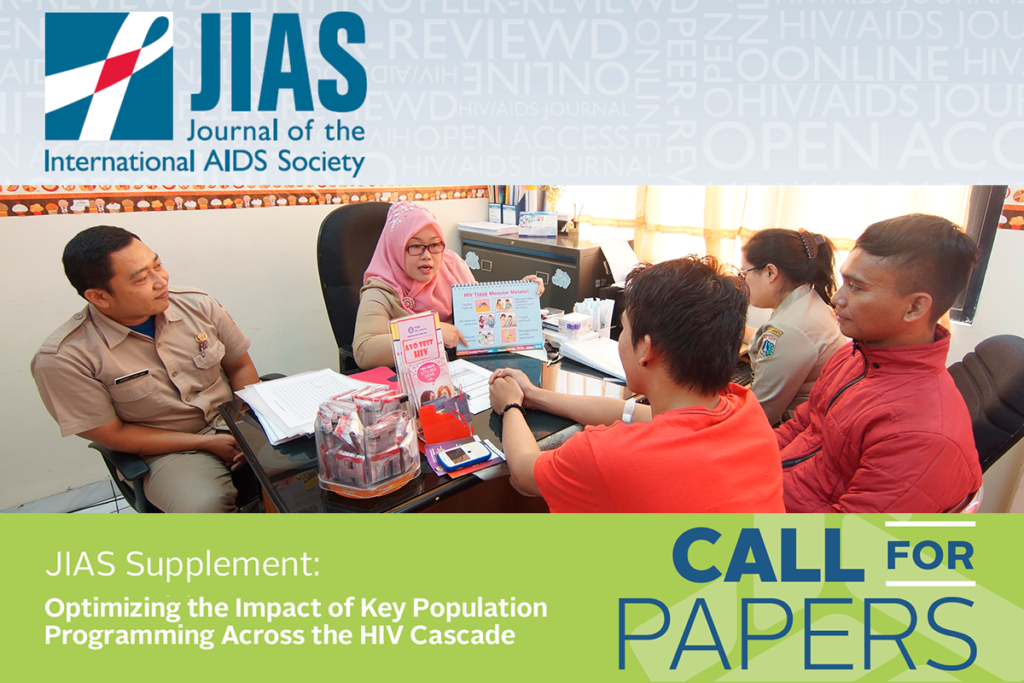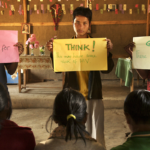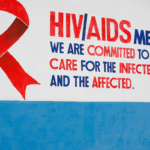Key populations – including men who have sex with men, sex workers, transgender people, and people who inject drugs – shoulder a disproportionate burden of HIV. UNAIDS estimates that between 40 and 50 percent of all new HIV infections among adults worldwide occur in these key populations and among their sex partners. Reaching members of these communities with evidence-based interventions that improve their access to and uptake of services across the HIV prevention, care, and treatment cascade is essential to achieving the UNAIDS 90-90-90 goals. In this post, I highlight a new call for papers that will focus on new evidence and data-driven strategies for improving key population programming across the HIV cascade.
Serious challenges exist for key populations when trying to access HIV services. The issues that drive the spread of HIV in key population communities and hinder their access to care – experiences of stigma, discrimination, violence and, in many cases, criminalization – have been well documented. The need to overcome these challenges has led to advances in the monitoring of key populations’ uptake of services across the cascade to identify “leaks” in the system, as well as more sophisticated analysis and use of those data to identify solutions and strengthen programming. In addition, a number of key population-focused implementation science studies are under way across a range of geographies to evaluate the effectiveness of new innovations, outreach strategies, and delivery modalities in overcoming structural obstacles and improving service uptake and retention with different key population groups.
Call for papers: announcement
An urgent need exists to take stock of this emerging evidence related to optimizing and monitoring service delivery for key populations. As key population programming is scaled up globally, it is critical that we maximize the public health impact of those efforts by bringing to bear the latest knowledge and evidence of what works to reach key populations and link them to the targeted prevention, treatment, and retention support they need.
The special supplement will feature a compilation of high-quality research from a range of multidisciplinary efforts to advance key population science and practice. Submission topics may include, but are not limited to:
- Best practices in data use to refine and focus interventions and services at the country level to reduce HIV transmission and improve the impact of national HIV programs for key populations.
- Findings from implementation science studies that broaden our understanding of service delivery modalities that are effective at improving the reach of prevention services, the uptake of HIV testing, and retention in HIV care and treatment among key populations.
- Evaluations of new innovations to enhance reach and engagement of key populations at different points along the HIV cascade.
- Field-based policy and programmatic case studies of HIV prevention, care, and treatment efforts for key populations, especially those that are meaningfully engaging or led by key population community members.
Call for papers: key dates
For questions about the supplement, please contact FHI 360’s Rose Wilcher. Note the following key dates regarding the submission and application timelines.
| Key dates | Activity |
|---|---|
| October 1, 2017 | If you intend to submit a manuscript for consideration for this supplement, the guest editors encourage you to send an email to Rose Wilcher by October 1, 2017 outlining the title, topic, key population of interest, and geographic focus of your paper. |
| December 1, 2017 | Full manuscripts should then be submitted to Rose Wilcher by December 1, 2017. Manuscripts should conform to the guidelines for authors available here and should be accompanied by a cover letter mentioning this special issue. All submissions will be reviewed by the guest editors and shortlisted for the supplement. |
| December 8, 2017 | Authors whose manuscripts have been shortlisted will be notified by December 8, 2017. |
| December 15, 2017 | The authors of shortlisted papers will be invited to submit their manuscripts to the Journal of the International AIDS Society. The deadline for submission to the Journal is December 15, 2017. |
An invitation to submit an article is not a guarantee of publication. All editorial decisions regarding publication in the Journal will be based on the outcome of peer review.
Utilizing evidence and data-driven strategies for improving key population programming across the HIV cascade is critical to achieving the UNAIDS 90-90-90 goals. This special supplement of the Journal of the International AIDS Society will allow the HIV community to review emerging evidence related to optimizing and monitoring service delivery for key populations.
Photo caption: During a counseling session in DKI Jakarta, Indonesia, Ibu Rika discusses HIV transmission and prevention for men who have sex with men (MSM), a population among which HIV prevalence in Indonesia is increasing.
Photo credit: © 2015 Aulia Human, Courtesy of Photoshare



